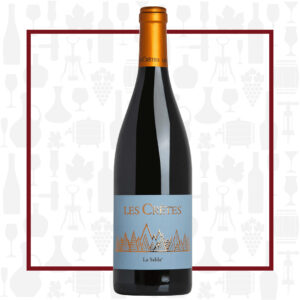Cellar Profile
In the mid 1700s, Bernardin Charrère moved from the Haute Savoie in Southeast France to the Aosta Valley and established Les Crêtes, a mill and farm in Aymavilles. This was in the middle of the 21 square mile Aosta Valley, in the heart of the wine region. In 1810, the family planted 2 hectares of vinifera grapes and the winery was born. The family still continues to craft wines from those vineyards to this day. Consistently recognized as the finest producer in the region, this is a boutique estate by international standards, but the largest privately-owned winery in Val d’Aosta. Working with the Italian government and other tiny vignerons in the region, Les Crêtes has been a pioneer in searching out rare, indigenous vinifera varieties — grapes like Petit Rouge, Mayolet, Prie Blanc, Premetta and Fumin, which exist nowhere else in the world — and helping protect them from extinction. This is one of the most challenging regions on earth to work for wine, with noncontiguous vineyards frequently planted on ledges on the side of steep Alpine mountains where they can find a little sandy soil. Hot summer days and extremely cool nights, coupled with a dry growing season allow for some of the longest hang times on earth. Their wines are powerful yet elegant, with trademark salty minerality – a true representation of this unique Alpine terroir.
Region
Surrounded by the Alps, the Valle d’Aosta is home to the highest elevated vineyards in all of Europe. The region is divided into three main vineyard areas: the upper valley,Valdigne; the central valley; and the lower valley. Most vineyards in the Aosta Valley occupy the steep, south-facing slopes above the Dora Baltea river, a tributary of the Po. The dramatic topography and diminutive size of the valley mean that the area available for viticulture is limited. Much of the valley floor, with its mineral-rich, well-watered soils, is simply too fertile for quality viticulture. As a result, many of the best vineyards here are on the lower slopes, and climb steadily up the slopes to top altitudes of around 1300m above sea level.
Vineyard
A blend of fruit sourced from the La Sabla, Bufferia and Sazzé vineyards in Aymavilles. These vines are between 20 and 70 years old. They are cultivated on steep slopes comprised of morainic, loose, sandy soils which are exposed to the northeast, southeast and southwest. They are at 500-750 meters above sea level.
Varieties
A blend of both indigenous (Petit Rouge and Cornalin) and international (Syrah and Merlot) grape varieties, all from estate vineyards. These high-quality blends that create a house style are quite common in the region and are afforded DOC status, in accordance with local guidelines.
Winemaking
Fermentation in steel tanks under a controlled temperature of 28°C. 10 to 12 day maceration with daily pumpover. A further 8 months aging in steel tanks.
Tasting Notes
Intense ruby colour in the glass. Fruity and floral nose with hints of raspberry and pansies. Fresh with full, round fruit on the palate, soft tannins, notes of raspberry and a lingering spicy finish.

 info@buyersandcellars.ca
www.buyersandcellars.ca
info@buyersandcellars.ca
www.buyersandcellars.ca